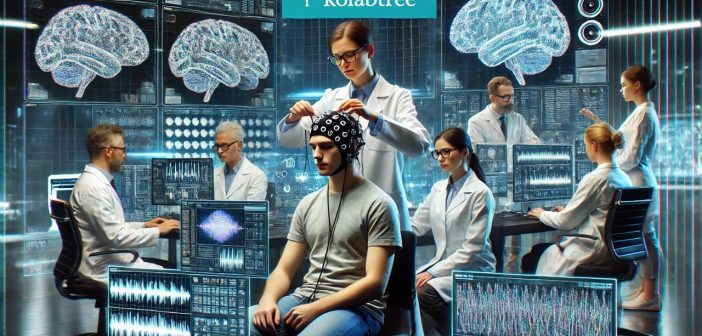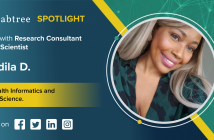The human brain, often regarded as the ultimate puzzle, holds the key to understanding who we are—our thoughts, emotions, and behaviors. With every decision, emotion, and reaction, intricate networks of neural activity are at play. Today, cutting-edge tools like electroencephalography (EEG), magnetoencephalography (MEG), functional magnetic resonance imaging (fMRI), and near-infrared spectroscopy (NIRS) are unlocking these hidden patterns, offering a window into the brain’s complex workings. From revolutionizing healthcare and advancing neuroscience to shaping the future of AI and consumer research, these technologies are transforming industries and paving the way for groundbreaking discoveries.
Collaborative platforms like Kolabtree are helping organizations harness the potential of neural data by connecting them with global experts in neuroscience, data science, and machine learning. Here’s a closer look at how brain wave recordings are shaping industries and how collaboration drives innovation.
Applications of Brain Wave Technology Across Industries
- Transforming Mental Health Treatment
Neural recordings are revolutionizing mental health care by enabling precise monitoring of brain activity. Technologies like EEG are helping clinicians diagnose and manage disorders such as depression, anxiety, post-traumatic stress disorder (PTSD) and attention-deficit/hyperactivity disorder (ADHD). Real-time brain wave monitoring is being utilized in neurofeedback therapy, empowering individuals to regulate their mental states.
- Personalized Learning and Education
Brain wave analysis is paving the way for personalized learning experiences. By understanding cognitive states in real-time, educators and technology developers are creating adaptive learning environments to improve engagement and knowledge retention.
- Consumer Behavior and Neuromarketing
Brands are leveraging neural data to decode consumer responses to advertisements, packaging, and products. Brain wave patterns can reveal levels of attention, emotional resonance, and decision-making tendencies, enabling companies to refine marketing strategies for maximum impact.
- Brain-Computer Interfaces (BCIs)
Company like Neuralink, exemplifies the transformative potential of brain-computer interfaces. By combining advanced neural recordings with cutting-edge technology, Neuralink is working toward enabling direct communication between the human brain and computers. Applications range from restoring motor function in individuals with paralysis to enhancing human cognition and interaction with AI. This intersection of neuroscience and technology holds immense promise for both healthcare and beyond.
- Expanding Frontiers in Gaming and Virtual Reality
Immersive experiences in gaming and virtual reality (VR) are incorporating brain wave recordings to create adaptive environments. By responding to players’ cognitive and emotional states, these technologies enhance engagement and interactivity, elevating user experiences.
Challenges in Recording and Interpreting Brain Waves
Despite its immense potential, recording and analyzing brain waves come with unique challenges:
- Signal Complexity: Neural recordings are often noisy, requiring advanced techniques to extract meaningful data.
- Interdisciplinary Expertise: Translating raw brain wave data into actionable insights demands collaboration between neuroscientists, data analysts, and machine learning experts.
- Ethical Concerns: Handling neural data raises issues of privacy, consent, and potential misuse, requiring robust ethical frameworks to protect individuals.
Overcoming these challenges calls for collaborative approaches and access to specialized expertise.
How Kolabtree Bridges the Gap
Kolabtree provides a platform where organizations and researchers can connect with a diverse pool of global experts to address challenges in neural data analysis and beyond. Here’s how Kolabtree adds value:
- Access to Niche Expertise: Whether you need a neuroscientist to design an experiment or a machine learning expert to analyze data, Kolabtree connects you with the right talent.
- Flexible Collaboration Models: From short-term consultations to long-term projects, Kolabtree allows organizations to engage experts on their terms.
- Cost-Effective Solutions: By working with freelancers, businesses can access world-class expertise without the overhead costs of hiring full-time specialists.
Kolabtree: Bridging Science and Industry
Kolabtree stands out as a platform that connects businesses with scientists and researchers worldwide. By providing access to a diverse pool of experts, it enables companies to address challenges efficiently and cost-effectively. For example:
- A company analyzing neural data can connect with experts in EEG signal processing to extract meaningful patterns.
- Businesses developing AI models can collaborate with neuroscientists to incorporate brain wave data into machine learning applications.
- Startups exploring consumer behavior can work with data scientists to understand neural responses and refine their strategies.
Through Kolabtree, businesses gain the flexibility to tackle niche challenges while benefiting from global expertise.
Future Trends in Brain Wave Applications
The field of brain wave technology is evolving rapidly, with emerging trends poised to shape its future:
- Integration with Artificial Intelligence
AI is enhancing the analysis of brain wave data by automating pattern recognition and improving predictive capabilities. This synergy is accelerating innovations in fields like personalized medicine, adaptive learning, and consumer research.
- Wearable Neurotechnology
Wearable devices capable of recording brain waves are making neural data more accessible to consumers. Sleep trackers, focus-enhancing headbands, and mood-monitoring headsets are democratizing brain health monitoring.
- Cross-Disciplinary Collaboration
Collaboration between neuroscientists, engineers, ethicists, and designers is essential for creating innovative solutions that are effective, ethical, and widely adopted.
Kolabtree Success Story: Collaborative Expertise in EEG Data Analysis and Personality Trait Prediction
A recent success on Kolabtree involved a researcher analyzing EEG resting-state data dataset to explore correlations with the different personality traits. The project required collaboration across multiple areas of expertise, including EEG data processing, statistical analysis, machine learning, and data visualization.
The researcher worked with EEG specialists to clean and integrate data, statisticians to assess relationships between EEG features and personality traits, and machine learning experts to develop predictive models. Data scientists created visualizations to highlight key findings.
This ongoing project demonstrates the value of interdisciplinary collaboration through Kolabtree, bringing together diverse expertise to tackle complex research challenges.
Kolabtree: Enabling Innovation Through Collaboration
The possibilities unlocked by brain wave technology are immense, but realizing its potential often requires cross-disciplinary expertise. Platforms like Kolabtree serve as catalysts for innovation by connecting businesses with world-class scientists, researchers, and data analysts.
Whether you’re exploring the neural basis of consumer behavior, developing a brain-computer interface, or analyzing mental health data, Kolabtree enables you to turn ideas into impactful outcomes.
Conclusion
Recording brain waves is no longer just a tool for scientists—it’s a gateway to understanding the human mind and transforming industries. By enabling collaboration and facilitating access to global expertise, platforms like Kolabtree ensure that businesses and researchers can unlock the full potential of this revolutionary technology.
Explore how Kolabtree can help you harness the power of neural data for innovation and success. Looking for expert help? Post a project for free on Kolabtree or scout from our wide network of freelance experts.
References
- Ahmed, Z., Wali, A., Shahid, S., Zikria, S., Rasheed, J., & Asuroglu, T. (2024). Psychiatric disorders from EEG signals through deep learning models. IBRO neuroscience reports, 17, 300–310. https://doi.org/10.1016/j.ibneur.2024.09.003
- Newson, J. J., & Thiagarajan, T. C. (2019). EEG Frequency Bands in Psychiatric Disorders: A Review of Resting State Studies. Frontiers in human neuroscience, 12, 521. https://doi.org/10.3389/fnhum.2018.00521
- Qing, K., Huang, R., & Hong, K. S. (2021). Decoding Three Different Preference Levels of Consumers Using Convolutional Neural Network: A Functional Near-Infrared Spectroscopy Study. Frontiers in human neuroscience, 14, 597864. https://doi.org/10.3389/fnhum.2020.597864
- Kalani, M., & Anjankar, A. (2024). Revolutionizing Neurology: The Role of Artificial Intelligence in Advancing Diagnosis and Treatment. Cureus, 16(6), e61706. https://doi.org/10.7759/cureus.61706
- Kober, S. E., Wood, G., & Berger, L. M. (2024). Controlling Virtual Reality With Brain Signals: State of the Art of Using VR-Based Feedback in Neurofeedback Applications. Applied psychophysiology and biofeedback, 10.1007/s10484-024-09677-8. Advance online publication. https://doi.org/10.1007/s10484-024-09677-8







